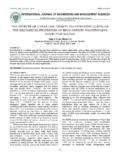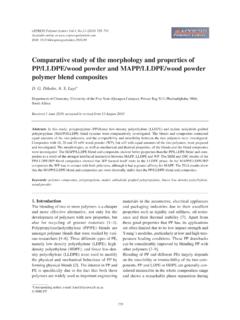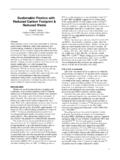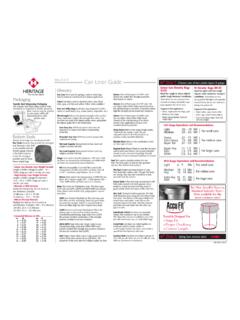Transcription of Mapping!flexible!packaging! in!a!Circular!Economy! [F.I.A ...
1 !!!!!!!!!!!!!!!!!!!!!!!!!!!!!!!!!!!!!!!! !!!!!!!!!!!!!!!!!!!!!!!!!!!!!!!!!!!!!!!! !!!!!!!!!!!!!!!!!!!!!!!!!!!!!!!!!!!!!!!! !!!!!!!!!!!!!!!!!!!!!!!!!!!!!!!!!!!!!!!! !!!!!!!!!!!!!!!!!!!!!!!!!!!!!!!!!!!!!!!! !!!!!!!!!!!!!!!!!!!!!!!!!!!!!!!!!!!!!!!! !!!!!!!!!!!!!!!!!!!!!!!!!!!!!!!!!!!!!!!! !!!!!!!!!!!!!!!!!!!!!!!!!!!!!!!!!!!!!!!! !!!!!!!!!!!!!!!!!!!!!!!!!!!!!!!!!!!!!!!! !!!!!!!!!!!!!!!!!!!!!!!!!!!!!!!!!!!!!!!! !!!!!!!!!!!!!!!!!!!!!!!!!!!!!!!!!!!!!!!! !!!!!!!!!!!!!!!!!!!!!!!!!!!!!!!!!!!!!!!! !!!!!!!!!!!!!!!!!!!!!!!!!!!!!!!!!!!!!!!! !!!!!!!!!!!!!!!!!!!!!!!!!!!!!!!!!!!!!!!! !!!!!!!!!!!!!!!!!!!!!!!!!!!!!!!!!!!!!!!! !!!!!!!!!!!!!!!!!!!!!!!!!!!!!!!!!!!!!!!! !!!!!!!!!!!!!!!!!!!!!!!!!!!!!!!!!!!!!!!! !!!!!!!!!!!!!!!!!!!!!!!!!!!!!!!!!!!!!!!! !!!!!!!!!!!!!!!!!!!!!!!!!!!!!!!!!!!!!!!! !!!!!!!!!!!!!!!!!!!!!!!!!!!!!!!!!!!!!!!! !!!!!!!!!!!!!!!!!!!!!!!!!!!!!!!!!!!!!!!! !!!!!!!!!!!!!!!!!!!!!!!!!!!!!!!!!!!!!!!! !!!!!!!!!!!!!!!!!!!!!!!!!!!!!!!!!!!!!!!! !!!!!!!!!!!!!!!!!!!!!!!!!!!!!!!!!!!!!!!! !!!!!!!!!
2 !!!!!!!!!!!!!!!!!!!!!!!!!!!!!!!!!!!!!!!! !!!!!!!!!!!!!!!!!!!!!!!!!!!!!!!!!!!!!!!! !!!!!!!!!!!!!!!!!!!!!!!!!!!!!!!!!!!!!!!! !!!!!!!!!!!!!!!!!!!!!!!!!!!!!!!!!!!!!!!! !!!!!!!!!!!!!!!!!!!!!!!!!!!!!!!!!!!!!!!! !!!!!!!!!!!!!!!!!!!!!!!!!!!!!!!!!!!!!!!! !!!!!!!!!!!!!!!!!!!!!!!!!!!!!!!!!!!!!!!! !!!!!!!!!!!!!PDEng!'!Chemical!Product!De sign!!Individual!Design!Project! !!! Mapping!flexible!packaging! in!a!Circu lar!Economy![ ]!!!Final!Report!!!Author:!Aur lie!Nonclercq!MSc.!Delft!University!of!T echnology!!!!!!!!Supervisors:!Graham!Hou lder!Sloop!Consulting!!Prof.!dr.!ir.!Pet er!Rem!Delft!University!of!Technology!Ir .!Pieter!Swinkels!Delft!University!of!Te chnology! !Peter!Daudey!Delft!University!of!Techno logy!!!!!!!Keywords:!Flexible!packaging, !Circular!Economy,!Recycling!!Date!issue d:!14!October!2016!! - Confidential - 2 Preface Delft University of Technology considers its role in society as supplying technological solutions that help people lead increasingly sustainable lives in a prospering economy.
3 Collaboration with significant players in society is an integral part of the ambition and strategy of TU Delft. In that light, the university joined the Ellen MacArthur Foundation as one of the five pioneer universities in 2013, to help the transition from a linear economy ( take, make, dispose ) to a Circular Economy. Based on this growing interest in Circular Economy, I was encouraged to undertake an individual design project in that direction in order to complete my Professional Doctorate in Engineering (PDEng). It was deemed important to look at one global challenge: (flexible) packaging. The increasingly global consumption of Fast Moving Consumer Goods in a linear economy combined with a growing and increasingly affluent worldwide population already leads to an enormous amount of packaging waste, both in terms of volume and economic value. Thus the initial idea was to re-design a packaging to improve the end of life possibilities to further close the loop.
4 By contacting relevant parties prior to the project started, it became quite clear that there is a misconception by consumers and governments that the difficulties in recycling flexible packaging preclude it from being relevant in a Circular Economy. The misconceptions include: !Flexible packaging is predominantly multi-material !Flexible packaging cannot be recycled Consequently, emphasis in the report has also been on presenting facts that correct these misperceptions, on capturing how it adds value in a Circular Economy, and on finding solutions to further close the loop via mechanical recycling. - Confidential - 3 Acknowledgement First of all, I would like to convey my sincere gratitude to Graham Houlder; for initiating the work on mapping flexible packaging in a Circular Economy, for developing the project, for his extended network and his excellent coordination skills. Without his effort, this project would have never come to light.
5 Furthermore I would like to thank him for his guidance and supervision, it was a pleasure to work with him. I would also like to thank all the stakeholder participants Nina Ackermans (Borealis), Isabel Arroyo (Dow), Dennis Bankmann (Henkel), Thomas Boucoiran (Siegwerk), Robert Corijn (Attero), Jean-Paul Duquet (Flexible Packaging Europe), Christian Goetzloff (Borealis), Fabienne Goosens (Attero), Thomas Greigeritsch (Constantia), Thomas Gr ner (Mondi), Sokhna Gueye (Nestl ), Karlheinz Hausmann (DuPont), Matthias Klauser (Bosch), Horst K rrer (Mondi), Louis Lindenberg (Unilever), Lars Lundquist (Nestl ), Tristan Merk (T nsmeier), Andreas Michalsky (Huhtamaki), Severine Mongauze (Unilever), Dana Mosora (Dow), Michael Scriba (Mtm Plastics/Borealis), Jaap van de Hoek (Urban Mining Corp) for their considerable input, for sharing their knowledge openly in rich discussions, for investing their valuable time and also for their financial support to the project.
6 Additionally, thanks to my TU Delft supervisors Peter Daudey, Pieter Swinkels and Peter Rem for their impact in the project. ! - Confidential - 4 Summary In the context of a Circular Economy where high recycling rates are regarded as a requirement, the perceived difficulty to recycle flexible packaging could preclude it from being considered a relevant packaging solution. The purpose of this project was to capture the facts supporting the value added by flexible packaging in a European Circular Economy, and to identify the challenges and the opportunities to increase this added value by closing the loop through pack and system design hereby increasing the quantities and quality of flexible packaging that are mechanically recycled. To realise these objectives, a dual approach was adopted. First, an extensive desktop study was carried out to find and collect evidence in the literature. Secondly, 17 stakeholders, major players from all parts of the European flexible packaging supply chain, contributed to the project by sharing their knowledge, expertise and experience to identify the challenges and to validate potential solutions to further increase the recyclability of flexible packaging.
7 The project concluded that flexible packaging clearly adds significant value in a circular economy prior to it becoming waste and that it typically uses less resources than alternative functionally equivalent packaging formats. This added value can be further improved if more flexible packaging is collected, recycled and the resources usefully redeployed. The examples studied demonstrated this for each stage of the value chain. This is specifically due to its highly efficient use of materials ( resource efficiency) enabling it to prevent packaging material usage whilst optimising food waste reduction. Most often this waste prevention benefit translated into both an economic benefit and a reduced environmental impact. Other major insights from the project were: !Data available from studies in two European countries implies that approximately 80% of the flexible packaging is mono-material making it potentially recyclable via the existing infrastructure for recycling conventional plastics.
8 Provided it can be effectively sorted out from the remaining 20% multi-material flexible packaging. !It was concluded that secondary plastics from flexible packaging would find suitable value adding end markets in non-food injection moulding applications provided sufficient quantities at consistent quality are available at an appropriate price relative to virgin polymers. !If (flexible) packaging is not collected, it cannot be recycled! Collection of flexible packaging by all European countries is a pre-condition for it to be sorted and recycled. This also applies to attracting new investment in sorting and recycling infrastructure. Collection of all flexible packaging will also contribute to preventing it from leaking into the natural environment to potentially become (marine) litter. !Current plastic waste sorting processes treat flexible packaging as a potential contaminant to other sorted plastic fractions and are designed to extract it from the waste stream.
9 If it was sorted further, approximately 80% of material could potentially be diverted back into other higher value plastic fractions. !Design for recyclability is challenging: most packs have already been optimised for minimum material usage for a given functionality. It is not that simple to balance functionality and manufacturability with increased recyclability at a realistic cost. To do this without compromise requires input from the full value chain. The project also generated a number of recommendations for future work, including: a detailed market analysis to confirm by country the ratio multi-material/mono-material; develop a robust methodology to quantify the value added by flexible packaging; how to identify and sort the 20% multi-material flexible packaging, and re-integrate the 80% mono-material into relevant plastic recycling streams; and the need to develop robust design guidelines for today and future. - Confidential - 5 List of abbreviations Abbreviation Meaning 2D 3D Two dimensional three dimensional ADP Abiotic Depletion Potential AlOx Aluminium Oxide BOPET Biaxially oriented polyethylene terephthalate BOPP Biaxially oriented polypropylene CaCO3 Calcium carbonate CED Cumulative Energy Demand CO2 Carbon dioxide CRD Cumulative Resource Demand DKR Deutsche Gesellschaft f r Kreislaufwirtschaft und Rohstoffe mbH ECS Eddy Current Sorting EFSA European Food Safety Authority EMF Ellen MacArthur Foundation EoL End-of-life EPR Extended Producer Responsibility EVOH Ethylene vinyl alcohol FIACE Flexibles in A Circular Economy FMCGs Fast moving consumer goods FPE Flexible Packaging Europe GMP Good Manufacturing Practice GPPS Global Protocol on Packaging Sustainability GPW Global Warming Potential HDPE high density polyethylene HF Hydrogen fluoride HFFS Horizontal Form Fill Seal HoQ House of quality LCA Life cycle assessment LDPE Low density
10 Polyethylene LLDPE Low linear density polyethylene MCI Material Circularity Indicator MDS Magnetic density separation MSW Municipal solid waste Mn number-average molecular weight Mw Weight-average molecular weight NIR Near infrared O2 Oxygen OOH Out of home OPP Oriented polypropylene P&PWD Packaging and Plastic Waste Directive PA Polyamide PAYT Pay As You Throw PCL Polycaprolactone PHA Polyhydroxyalkanoates PHB Polyhydroxybutyrate PLA Polylactic acid PE Polyethylene PET Polyethylene terephthalate PP Polypropylene PUR Polyurethane PVC Polyvinylchloride RM Raw materials THF Tetrahydrofuran TiO2 Titanium dioxide TPU Thermoplastic polyurethane - Confidential - 6 Table of contents Preface .. 2!Acknowledgement .. 3!Summary .. 4!List of abbreviations .. 5!Chapter 1: Introduction .. 8! !Project background .. 8! !Project Partners .. 9! !Project goal and approach .. 10! !Project scope .. 10! !Project challenges .. 12! !Project execution .. 12! !Report content structure.









